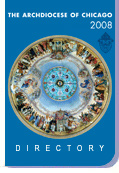|
|
SONNETS TO THE UNSEEN: A Life of Christ
By Christopher FitzGerald.
Opus Bonum, 196 pp., $18.95
Reviewed by Fr. Anthony J. Brankin
SPECIAL CONTRIBUTOR
Why on earth would anyone—especially in these marvelous modern
days—be caught writing sonnets? And not just sonnets, but sonnets
about God and Jesus no less!
Well, that is exactly what we have in Christopher FitzGerald’s
“Sonnets to the Unseen A Life of Christ.” FitzGerald, a native
Chicagoan, has penned an amazing collection of sonnets—almost
200 of them. Each 14-lined treasure is a precious, thoughtful
and finely wrought exposition of the foundations of the Catholic
Faith.
The collection is so orderly it is almost a catechism—rewarding
the reader not only with stunning imagery but wondrous reveries
about the supernatural as well—and all within the context of the
life of Christ and within the construct of the sonnet.
Over the course of these pages, the reader is guided through discussions
of the Trinity, Creation, Sin, the Incarnation, and finally into
a marvelous poetic exposition of his most merciful death and resurrection.
FitzGerald’s sonnets begin where everything must begin—in wonder:
about God, about the universe, about creation-and about us. The
author expresses the headiest philosophical concepts in delightful
and clear octets, sestets and couplets. Look at how he deals with
the absolute necessity of God’s Being:
I see life not so clearly, not quite whole,/But recognize that
You exist apart/From chance, dependence, time. Thou art Who art./Out
of time and space. Eternal scroll./And me, I skate on ice ontologically
thin:/I am who I am, all right, but might never have been. (p.
7)
FitzGerald’s sonnets are packed with many such twists and ironies
and no small number of seemingly incongruous yet appropriate images.
The power of these sonnets causes the reader to pause and ponder
over the sometimes missed beauty of it all. Each line and phrase
begs us to meditate one moment longer than we might have had the
combinations of those words been more familiar.
Consider his treatment of the Resurrection:
Now every aspect heavenward did tilt./The Word bespoken or in
measures played/Flew birdlike up in endless accolade/With wings
no longer weighted down with guilt. (p. 183)
The images exalt as does the miracle itself.
Now the most marvelous thing about “Sonnets to the Unseen” is
that the talented author is an obvious believer—certainly in things
unseen and in the reality of the supernatural.
This is no small element in accounting for the overall success
of these sonnets; for in an age when theology often uses that
which we believe as the poetic analog of something else—usually
us and our experiences—FitzGerald uses poetry to actually get
to the heart of what we believe. No modernist FitzGerald!
But so accustomed are we to free verse and free rhyme and totally
unencumbered verbal flights that we may be forgiven for asking:
Why would FitzGerald employ the sonnet—a rigorously structured
type of poem that contains, generally, 10 syllables per line and
only 14 lines with various rhyming patterns providing the necessary
divisions and unities.
Why would FitzGerald resort to such an ancient literary device
as the sonnet? The answer is easy: because it is so powerful.
It is the difference between gunpowder sprinkled over a workbench
or packed tightly in a brass casing. It is the compression that
provides both focus and strength.
One could as easily ask Raphael: Why limit yourself to the crabbed
dimensions of a wooden panel? Or the space above the door in some
papal apartment? And Raphael might well answer: the better to
concentrate beauty.
That is exactly what Christopher FitzGerald has achieved in “Sonnets
to the Unseen.” He obviously believes in the efficacy of art as
well as in the efficacy of grace, and that is what makes his work
a delight to read.
Brankin is pastor of St. Thomas More Parish.
Front Page | Digest | Cardinal | Interview
Classifieds | About Us | Write Us | Subscribe | Advertise
Archive | Catholic Sites | New World Publications | Católico | Directory | Site Map
|





